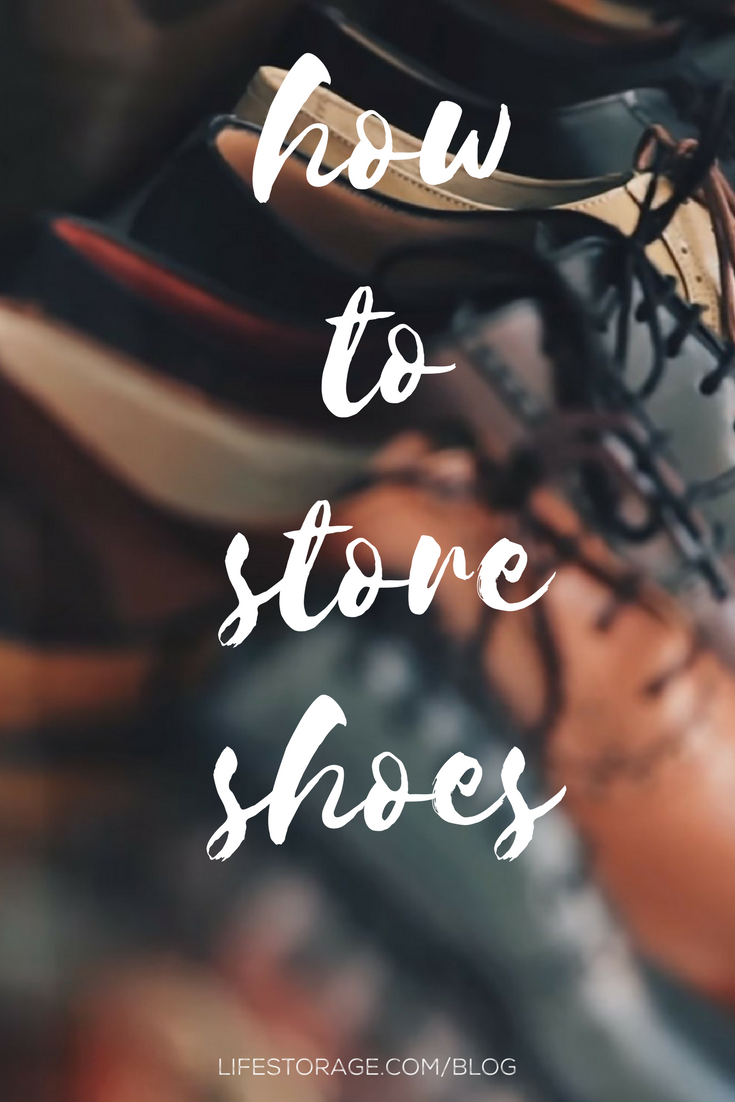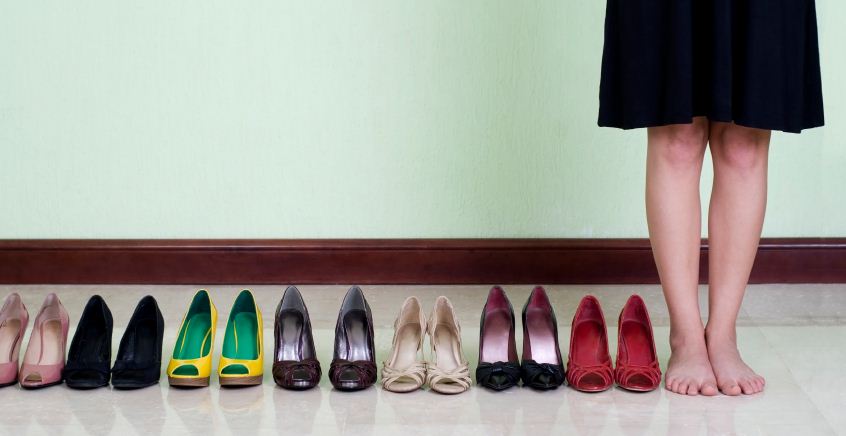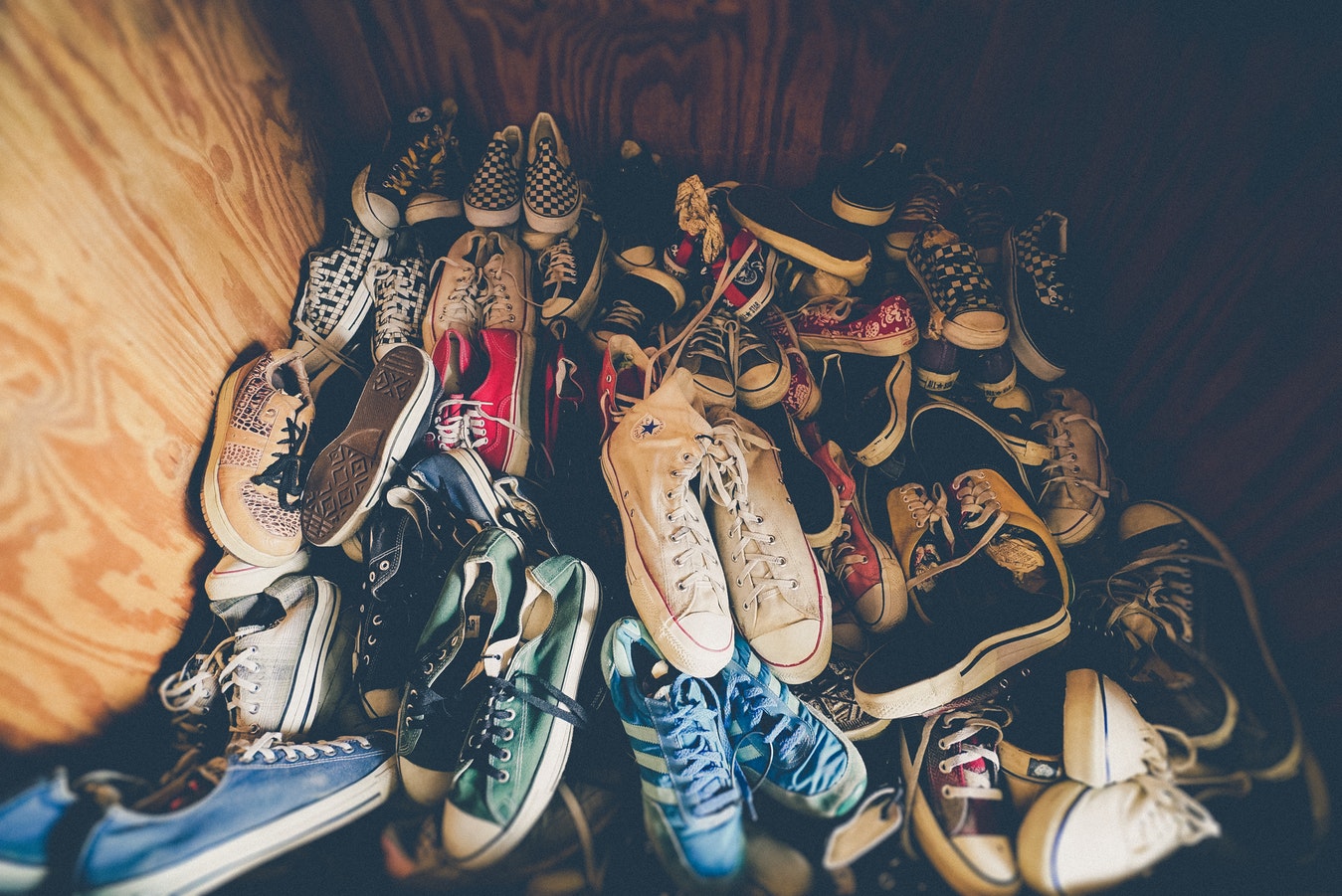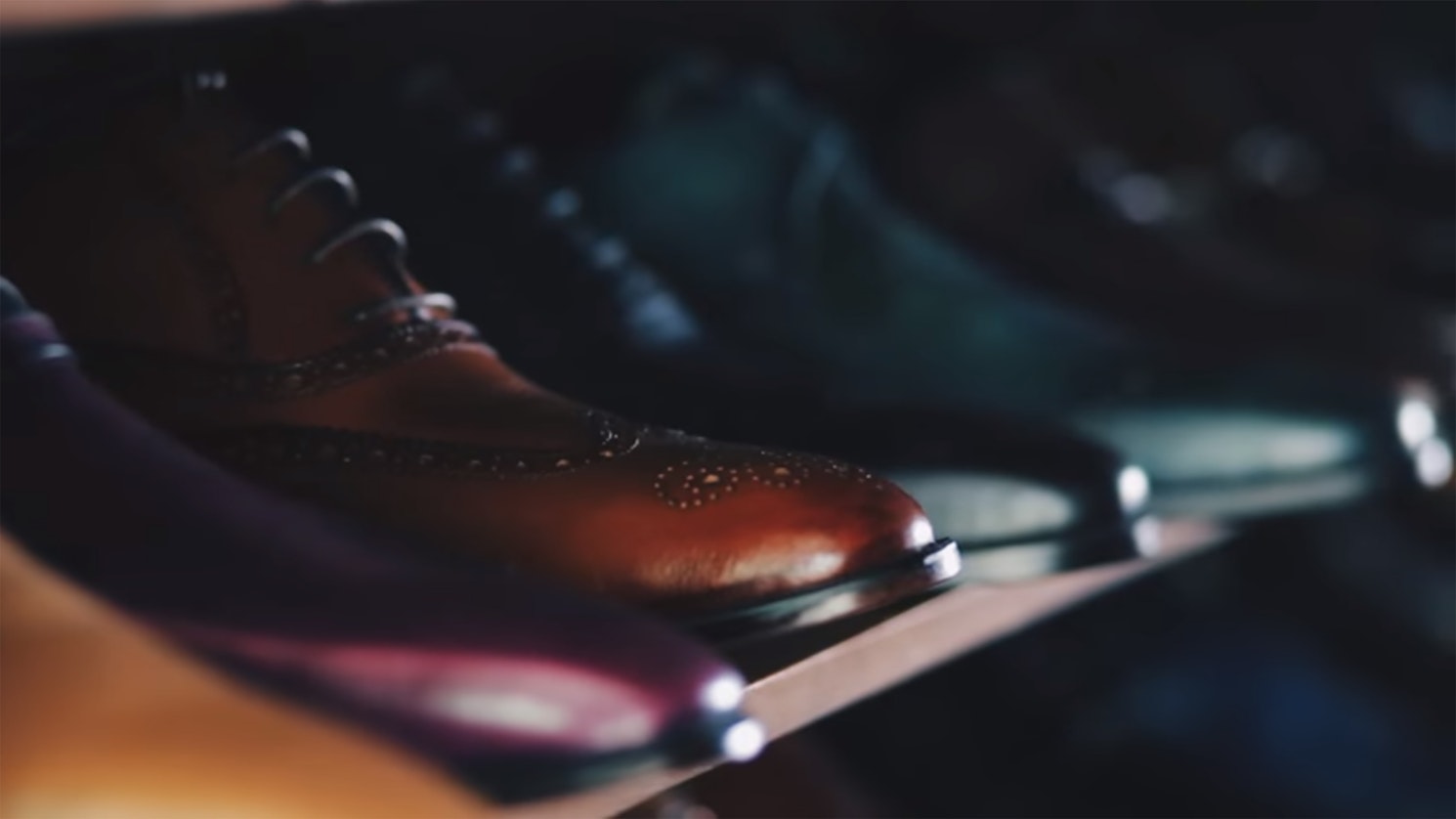
Shoes and boots are your hardest working accessories, and they aren’t cheap to replace either. But even despite their value, it can be easy to let long-term shoe care fall to the wayside. Are you one of those people who shoves all of your shoes inside a closet in a big pile? If you answered yes, don’t worry. You’re not alone.
Knowing how to store shoes properly will help you keep your shoes pristine and wearable for years to come. So not only will your shoes look great for longer, but you’ll also save money in the long run with less trips to the store to replace them.
Whether you need shoe storage for the short term or long term, these shoe storage tips will get you started.
What is the Best Way to Store Shoes?
The truth is: There isn’t one “best” way to store shoes. Whether you store your shoes in their original boxes, in a shoe organizer in your entryway, or even under your bed, how you decide to store your shoes depends entirely on your personal living situation. But regardless of what shoe storage method you choose, it’s most important to keep shoes shapely, clean, and dry.
Not sure how to store your shoes at home? First and foremost, it may be helpful to nail down how many pairs of shoes you have and how much space you have available in your home to store them. (If you’re feeling overwhelmed during this process, it may be time to donate the footwear you don’t use!)
Where Should Shoes Be Stored at Home?
Once you have a better feel for how many shoes you need to store, the next step is deciding where exactly to store them. Closets, mudrooms, and garages are often the most popular places people store shoes in houses and apartments. These areas tend to keep shoes out of the way, but still organized for quick and easy access.
Once you determine where you’ll be storing your footwear at home, you can move on to choosing a shoe organizer that works best with your space.
Types of Shoe Organizers & Storage Solutions
Specialized shoe storage options range from wire racks to boxes to custom cabinets, but the optimal storage solution depends on how long the shoes will go without being worn.
Related: The Ultimate Guide to Home Organization
As a general rule of thumb: For shoes you wear often, open storage that lets damp leather or fabric breathe will keep shoes fresh. For long-term storage, these solutions don’t provide enough support for shoes.
Keeping this in mind, here are just a few different types of shoe storage methods you may want to consider:
Shoe Storage Boxes
Shoe boxes give your shoes the highest level of protection from dust, sunlight and temperature extremes that can sap leather shoes of their flexibility. Boxing vintage shoes and boots after stuffing and wrapping them will help preserve fine leather, cork and other organic materials.
Plastic boxes are another shoe storage alternative, but be sure your shoes are spotless and dry before storing to prevent mildew growth. Another option is to replace the original shoeboxes you brought home from the store with photograph storage boxes. But whatever you choose, make sure the shoe storage box is acid-free.
Shoe Racks and Cabinets
For shoes you wear regularly, a rack or cabinet with an open front allows air to circulate around your footwear while keeping dust from collecting on delicate materials. Shoe shelving with open fronts also helps you keep sneakers, sandals, boots, and other types of footwear organized.
If you can, consider placing a shoe rack in a convenient place such as the garage, entryway or mudroom. That way, family members can quickly put their shoes away where they belong on their way inside the house. By placing the cabinet or rack in as convenient a place as possible, family members have no excuse not to put their shoes away where they belong and out of harm’s way.
An organized mudroom or entryway indeed goes a long way when trying to keep your shoes in good shape. If your mudroom is in need of a revamp, get inspired by our DIY mudroom bench tutorial.
Shoe Trees
Trees and peg boards that keep your shoes off of the floor are excellent for keeping closets organized and cutting down on clutter. Just be aware: These convenient items aren’t meant for long-term shoe storage. That’s because anything that fits inside the shoe and distorts its silhouette can stretch leather and fabric uppers over time.
Instead of relying on shoe trees as a long-term shoe storage solution, save them for casual footwear you use frequently. Running shoes, flip flops, flats, and other types of daily footwear will be totally fine in a shoe tree. You can also further preserve your shoes’ shape by switching the way you hang shoes or the way you put them in pockets.
How to Store Shoes at Home: Storage Tips to Preserve and Protect Your Kicks
Aside from picking the right type of shoe organizer that works best for you, there are a few more things to remember when storing different types of footwear. Read on for our best tips on how to store shoes to promote long-term wear:
1. Use a shoe tree for storing shoes short term.

Gravity, humidity, and aridity can all take their toll on shoes. Over time, the folds and creases that naturally form in worn shoes become permanent deformations of structural elements.
On top of that, as materials age, they can become stiff. Curled leather insoles and crumpled toe boxes are a major sign that vintage shoes have spent too long in storage without any proactive shaping or filling.
For short-term shoe storage, certain types of footwear really only need the minor support of a shoe tree or a quick reshaping by hand as you set them on a shelf. Just be sure to carefully place your shoes on the shoe tree anytime you take them off. Throwing shoes in a pile on the floor will cause them to lose shape.
2. Put shoes on wooden shoe horns for long term shoe storage.

Long-term shoe storage looks a little different than quick storage solutions for footwear you wear daily. Shoes that will be off your feet for a week or more need structure, and wooden shoe horns and stretchers are an elegant option for helping shoes keep their shape if they’ll be tucked away in storage for a while.
However, you must use the correct size to avoid stretching the shoe. Adjustable versions let you customize the fit for optimal storage.
Before inserting wooden or plastic shoe horns, allow your shoes to rest for at least a day after wearing them so any residual moisture can evaporate. Otherwise, the insert could trap dampness within the shoe and lead to deterioration.
3. Use acid-free tissue to stuff the shoes.
Another great, yet uncommon long-term shoe storage solution to consider trying is stuffing your footwear with acid-free paper. As a highly absorbent material, acid-free paper maintains a shoe’s proper moisture level while protecting the shoes from deteriorating. When using paper to stuff shoes for moderate or long-term storage, opt for acid-free tissue instead of newsprint. Ink can permanently damage shoes, and newsprint isn’t a great absorber of moisture.
Need to stuff boots or thicker shoes? While paper may not have enough heft to properly fill boots and thick leather or felted shoes, unbleached muslin fabric is an excellent alternative. Like paper, muslin wicks away residual moisture, and it also protects metal buckles and delicate sequins from scratches.
4. Clean shoes thoroughly before storing them.

To prolong the life of your footwear, you should clean your shoes regularly whether you plan to store them or not. But before storing your shoes, sandals, boots, or other types of footwear, be sure to clean them thoroughly. You’ll also want to apply leather conditioner to leather soles and uppers whenever applicable.
Related: A Guide to Storing Winter Clothing in the Summer
5. Keep shoes in a climate controlled environment.

Climate-controlled storage is ideal for shoes as temperature and humidity extremes turn leather brittle, weaken fabrics and cause glues to loosen. Shoes left too long in attics or basements can become unusable within a season or two of harsh treatment.
If your house or apartment doesn’t have a ton of extra space for shoe storage, you may want to consider renting in a climate-controlled storage unit near you. You can easily declutter your home and save on precious storage space by rotating your seasonal footwear with the changing seasons. Plus, you can feel confident your shoes will be safe and protected in a shoe-friendly climate.
6. Roll acid-free cardboard for boot storage.
If you live in a region that sees a lot of snow, you already know how tough it can be to figure out how to store snow boots, fashion boots, and other kinds of winter footwear during the warmer months.
You can help tall winter boots keep their shape by stuffing the feet with muslin or acid-free paper. This step prevents creases from weakening materials at the ankle as the boots flop to the side. For the shanks, you’ll want to use rolled inserts of acid-free cardboard.
7. Add silica packets to light-weight shoes.

Summer shoes are lightweight and often contain fragile materials. That’s why espadrille-style sandals and shoes with cork soles generally don’t do well with frequent changes in humidity.
For an added layer of protection, simply add a package of silica gel to your summer shoes’s storage container. This will remove any dampness and moisture, keeping your favorite sandals ready to go when the summer rolls around again.
You’ll also want to store any brightly colored shoes out of direct sunlight that could bleach them. But that goes for just about any type of shoe!
Read Also: A Guide to Storing Winter Clothing in the Summer
Keep Your Footwear In Good Condition With These Shoe Storage Ideas
Whether you’ve got an entire closet full of shoes or just operate with a few solid, go-to pairs, hopefully this shoe storage guide helped steer you in the right direction. Feel free to bookmark this page for easy access to refer back to it in the future!
This post originally appeared on the Life Storage blog on 6/4/13 and was revised on 2/7/19 and 10/24/22 to provide new information.







